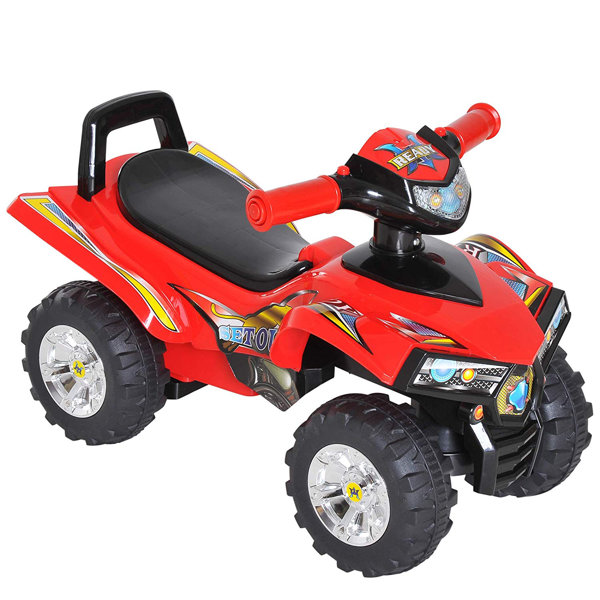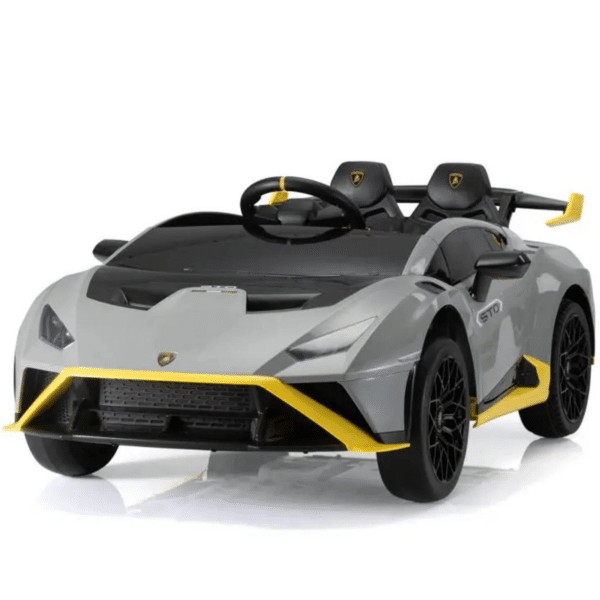Good Reasons To Picking Remote Control Childrens Cars
Wiki Article
What Should I Know About Battery Life And Charging Times Of An Electric Ride-On Children's Car?
It is important to understand the life span of your battery for your electric ride-on car for kids and the time it takes to recharge. This will guarantee that you can play for hours without interruption. What you need to understand - Battery Type
Most electric ride-on vehicles are rechargeable and utilize led-acid or lithium-ion batteries. Lithium-ion batteries have a longer battery life than lead-acid batteries and charge more quickly.
Battery Capacity
The size of the battery that is expressed in amperehours (Ah), or watthours(Wh) will determine the amount of time a car can be operated with a single charge. Battery capacity is important because it determines how long the car's ride-on capabilities last before charging.
Run Time -
The run-time of an electric ride-on car is how long it can operate continuously on one charge. This can be affected by factors like the battery's capacity, the strength of motor, the terrain and the weight of a driver.
The typical run time for electric ride-on cars range from 30 minutes to 2 hours with just one charge. Some high-capacity battery packs may have longer time-to-run.
Charge Time
The charging time is the length of time it takes for a battery to be fully charged after it has been exhausted. The time to charge is based on the charger specification as well as the battery's capacity and charging method.
The average charging time of electric ride-on cars is 8-12 hours. Certain models provide faster charging and charging times, particularly models that utilize lithium-ion batteries.
To ensure the safety of your family and prolong battery life, it's essential to recharge the battery in accordance with the instructions of the manufacturer. Battery performance can be adversely affected if the battery is either overcharged or undercharged.
Charging Method
Chargers for electric ride-ons are usually connected to standard electrical outlets. Certain models might have rapid charging capabilities or an intelligent charger that monitors the battery's charge status and adjusts the charging rate accordingly.
Ensure that the charger connectors and port are compatible with the charger provided with the ride-on vehicle in order to prevent damage to the battery or the electrical system.
Batteries Additional
Certain electric vehicles allow you to purchase additional batteries or batteries to prolong the playtime. The availability of extra batteries allows you to change out battery that is depleted to fully charged ones, thus reducing the amount of time between sessions.
Knowing the battery's charge time of a kid's ride-on vehicle will ensure that you and your child have fun, uninterrupted playtime as well as thrilling adventures. The battery performance and life can be extended by regular charging of the batteries, and using proper charging practices. Read the recommended kids cars for website advice including kiddies cars, ride electric car, car toy toy, childs car toy, kiddies cars, race car toy car, riding digger, ride ons, toy toy cars, pedal car and more. .

What Is The Main Difference Between Outdoor And Indoor Model Cars For Children?
The models are designed with features and characteristics that are specific to the particular environment and usage scenario, whether outdoors or indoors. Here are some of the different features of these cars - Indoor Use Cars
Dimensions and weight- Cars intended for indoor use will have a smaller dimensions and weigh less which makes them more able to maneuver in tight space. These include playrooms and living spaces. They're compact enough to navigate tight corners and narrow passages without damaging furniture or walls.
Low Ground Clearance for Indoor Use cars have low ground clearance, which prevents them from getting stuck or snagged upon obstacles like rugs, carpets, or thresholds. This allows for seamless and uninterrupted movement over indoor surfaces, without the risk of getting stuck or tipping over.
Smooth Wheels The wheels of indoor use cars are often made of smooth materials such as plastic or rubber to offer traction and grip on smooth surfaces like hardwood floors, laminate flooring, or tiles. They are designed to minimize noise and stop scratching or scuffing surfaces in indoor environments.
Limited Speed - When it comes to indoor use, cars usually have slower speeds than they would be in order to make sure that they can be safely operated and controlled in narrow space. This can prevent accidents or collisions with walls, furniture or any other obstacles that are commonly found indoors.
Outdoor Use Cars -
Durable construction - Outdoor vehicles are built using durable materials, such as steel or tough plastic to withstand harsh handling and the elements of nature such as temperatures, humidity, and sunlight changes. They are less susceptible to wear and tear from exposure to outdoor conditions.
Higher Ground Clearance - Outdoor use cars have higher ground clearance to maneuver through bumps, uneven terrain or obstacles encountered outdoors. This allows cars to navigate over rough terrains without damage or a snag.
Traction Tires - The tires on cars that are designed for outdoor use are typically fitted with patterns or treads to improve traction and grip on uneven or slippery surfaces. This gives you stability and control when driving outdoors, preventing sliding or sliding.
Weather resistance. Outdoor cars are often equipped with weather-proof components such as sealed electronics, waterproof casings, and rust-proof materials. This protects the car from damage caused by environmental factors. They are able to stand up to water, rain, or puddles, while retaining their performance.
Higher Speeds - Cars for outdoor use usually feature higher top speeds in order to be able to handle large spaces and the long distances outdoors. This provides a more exhilarating and thrilling riding experience for children exploring outdoors.
Consider these features and characteristics when choosing a model for your child's vehicle. It will be adapted to the conditions and uses that you envision, whether it is outdoor, indoors, or both. You can ensure an enjoyable, long-lasting and safe experience for your child. Check out the most popular discover more about Mercedes ride on car for more tips including toy and car, electric two seater cars, kidscars, a toy car, ride on car, kids electric cars, two seater childrens electric cars, pedal car, car toy car toy, race car toy car and more. .

What Is The Most Reliable Remote Control Car For Kids? What Are Their Advantages And Disadvantages?
Remote control children's cars are also known as RCs or remote controlled cars. They come in a variety of designs, prices and sizes to meet every budget and preference. The pros and cons, and the dimensions, types, prices of remote-controlled children's vehicles are listed below.
Electric RC Cars – Batterie-powered remote-controlled vehicles that can be used both indoors and out. They are available in a variety of styles, such as trucks, buggies, and sports cars.
Nitro RC Cars - Gas-powered remote-controlled cars that have higher speeds and performance but require more maintenance and expertise to operate. They're bigger and typically cost more than electric RC Cars.
Scale Models (Remote-controlled replicas) - These are miniatures of real-life vehicles like cars, trucks or planes. Scale models range from 1 -10 to 1-24, with the larger scales offering more detail.
Sizes -
The dimensions of remote-controlled cars for children range from tiny micro-sized models to larger-scale versions. The size of the vehicle can impact its performance and speed.
Micro-sized cars are small and light, which makes them ideal for indoor use and younger children. Cars that are larger in size offer more power and durability and are therefore ideal for off-road or outdoor racing.
Prices
Prices of remote-control children's vehicles depend on the factors that determine them, such as the size, features and model.
Micro-sized electric cars are available for purchase at prices of $20 to $100 while larger electric and nitro-powered RCs can cost $100-$500 or more.
The cost of scale models as well as hobby-grade RC vehicles can vary between a few hundred dollars to more than 1000 dollars, based on the level of performance and precision.
Pros and Cons
Pros -
Entertainment - Children's remote control cars can provide hours of entertainment and excitement for both children and adults.
Skills development Learning to drive an RC vehicle will help kids improve their spatial awareness as well as hand-eye coordination.
Social Interaction: RC vehicles are great for social interaction with your family and friends.
Customization – Many RC automobile models are customized using aftermarket parts, upgrades and accessories to boost performance and aesthetics.
Cons
Costs - A car that is remote controlled for children with advanced features or even hobby grade models can be expensive.
Learning Curve - Controlling an RC vehicle requires practice and skills, and young children might struggle when it comes to the controls at first.
Maintenance - RC cars need regular maintenance, such as cleaning, lubrication and occasional repairs or part replacements.
Safety Concerns Safety Concerns RC vehicles are prone to danger if they are not operated properly under the supervision of an adult. They could create accidents, fall hazards and electrical hazards.
Remote control cars for children can be a fantastic learning and entertaining experience. But, it's important to choose the right model based on factors like size, safety, cost and features. Hobby-grade RC cars are better for older and enthusiast children and simpler models are better for younger and novice children. See the best electric kids cars kidscars.co.uk tips for site examples including childs ride on car, toy cars toy car, toy ride, childrens electric cars, electric two seater cars, ride a toy, childrens electric ride on, toy cars, two seater electric cars, childrens digger and more. .
